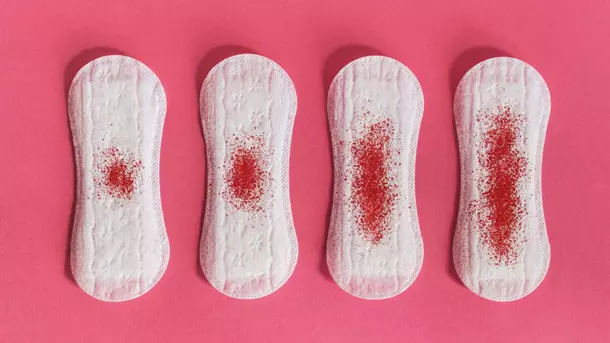Do you notice light blood stains after, during or before your periods? It could be spotting. Don't fret just yet. It could be normal in some cases. In others, it could be a sign that something wrong is going on in your body. Not to worry, this article sheds more light on spotting, causes, accompanying symptoms and a way forward to get treatment.
Spotting is light vaginal bleeding that happens outside your regular periods. Typically, spotting involves small amounts of blood. You may notice it on toilet paper after you’ve used the restroom or in your underwear. It usually only requires a panty liner if you need protection, not a pad or tampon.
The actual cause of spotting differs for different women in various stages of life. Younger women who started menstruating may experience spotting during their periods. Women who have fibroids or other reproductive conditions also experience spotting.
For women approaching menopause, they may experience light spotting, irregular periods, and missed periods. Sometimes, women nearing their menopausal age develop endometrial hyperplasia. This occurs due to excessive thickening of the uterine walls, which leads to spotting.
Can I bleed or experience spotting any other time of the month?
Bleeding or spotting at any time other than your period is considered abnormal vaginal or intermenstrual bleeding. What causes spotting before periods?
There are several reasons you might experience spotting before your period. Many of these causes can be effectively treated or dealt with. They include:
- Birth control: Hormonal birth control pills, patches, injections, rings, and implants can all cause spotting between periods.
- Ovulation: About 3% of women experience spotting related to ovulation. Ovulation spotting is light bleeding that occurs around the time in your menstrual cycle when your ovary releases an egg. For many women, this can be anywhere between 11 days and 21 days after the first day of your last period. Ovulation spotting may be light pink or red and will last about 1 to 2 days in the middle of your cycle.
- Implantation spotting: Implantation spotting may occur when a fertilised egg attaches to the inner lining of your uterus. But everyone doesn’t experience implantation bleeding when they become pregnant. If it does occur, implantation spotting happens a few days before your next period should occur. It is usually light pink to dark brown in colour, much lighter in flow than a typical period, and doesn’t last as long as a typical period.
- Pregnancy: Spotting during pregnancy is not uncommon. About 15 to 25% of women will experience spotting during their first trimester. The bleeding is often light and may be pink, red, or brown.
- Perimenopause: As you transition to menopause, you may have months where you don’t ovulate. This transitional time is called perimenopause. During perimenopause, your periods become more irregular, and you may experience some spotting. You might skip periods or have menstrual bleeding that’s lighter or heavier than usual.
- Trauma: Trauma to the vagina or cervix can sometimes cause irregular spotting.
- Uterine or cervical polyps: Polyps are small abnormal tissue growths that can occur in several places, including the cervix and uterus. Most polyps are benign or noncancerous.
- Sexually transmitted infection: Sexually transmitted infections (STIs), such as chlamydia or gonorrhoea, can cause spotting between periods or after sex.
- Pelvic inflammatory disease: Abnormal bleeding between periods is a common pelvic inflammatory disease (PID) symptom. You can develop PID if bacteria spread from your vagina to your uterus, fallopian tubes, or ovaries.
- Fibroid: Uterine fibroids are growths on the uterus and spotting between periods.
- Endometriosis: Endometriosis happens when tissue that usually lines the inside of your uterus grows outside of the uterus. This condition can cause bleeding or spotting between periods and other symptoms.
- Polycystic ovary syndrome (PCOS): Irregular bleeding between periods is sometimes a sign of polycystic ovary syndrome (PCOS). This condition happens when a woman’s ovaries or adrenal glands produce too many “male” hormones, such as androgens and testosterone.
- Stress: Stress can cause changes in your body, including fluctuations in your menstrual cycle. Some women may experience vaginal spotting due to high physical or emotional stress levels.
- Medications: Certain medicines, such as blood thinners, thyroid medications, and hormonal drugs, can cause vaginal bleeding between your periods.
- Thyroid problems: An underactive thyroid can sometimes cause you to spot after your period ends.
- Cancer: Certain cancers can cause abnormal bleeding, spotting, or other forms of vaginal discharge.
- Certain medical conditions, such as diabetes, liver disease, kidney disease, and bleeding disorders, may cause spotting between your periods. Spotting before your period can be caused by a variety of factors. Some of these require prompt medical treatment, while others are harmless.
Symptoms that may occur with spotting
- Fatigue
- Missed periods
- Irregular periods
- Pain during sex
- Constipation
- Fever
- Increase in heartbeat
Way forward
Spotting can be due to various conditions; at other times, it could be a severe medical condition. If you notice any of these signs and symptoms, immediately reach out to your healthcare provider to carry out a complete diagnosis of the problem.










Comments